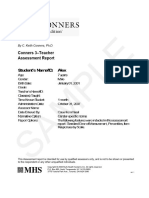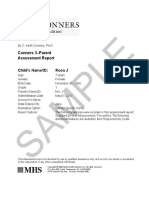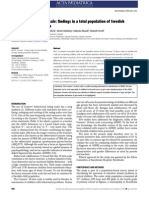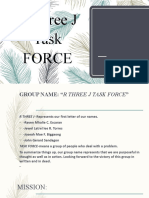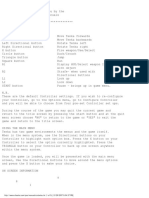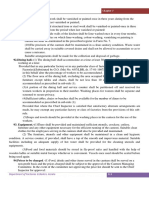0% found this document useful (0 votes)
61 views19 pagesConnor's Rating Scale For ADHD - 3 Psycho-Diagnostic Report: Authors, History, and Test Development
The Conners Rating Scale for ADHD is a diagnostic tool for assessing ADHD and related behavioral disorders in children aged 6-18, consisting of parent, teacher, and self-report forms. Developed by Dr. C. Keith Conners, it has undergone several revisions, with the latest version released in 2022, aligning with DSM-5 criteria and improving cultural adaptation. The report includes a case study of a 17-year-old female client, highlighting her symptoms and the results from the Conners 3 assessments, indicating varying levels of inattention, hyperactivity, and aggression.
Uploaded by
7vb42qps4kCopyright
© © All Rights Reserved
We take content rights seriously. If you suspect this is your content, claim it here.
Available Formats
Download as PDF, TXT or read online on Scribd
0% found this document useful (0 votes)
61 views19 pagesConnor's Rating Scale For ADHD - 3 Psycho-Diagnostic Report: Authors, History, and Test Development
The Conners Rating Scale for ADHD is a diagnostic tool for assessing ADHD and related behavioral disorders in children aged 6-18, consisting of parent, teacher, and self-report forms. Developed by Dr. C. Keith Conners, it has undergone several revisions, with the latest version released in 2022, aligning with DSM-5 criteria and improving cultural adaptation. The report includes a case study of a 17-year-old female client, highlighting her symptoms and the results from the Conners 3 assessments, indicating varying levels of inattention, hyperactivity, and aggression.
Uploaded by
7vb42qps4kCopyright
© © All Rights Reserved
We take content rights seriously. If you suspect this is your content, claim it here.
Available Formats
Download as PDF, TXT or read online on Scribd
/ 19




